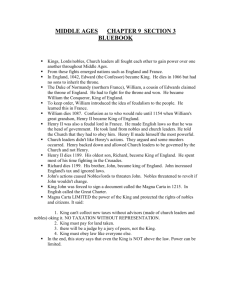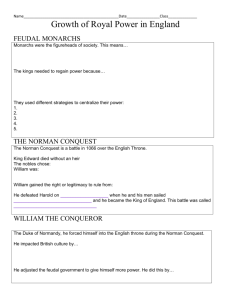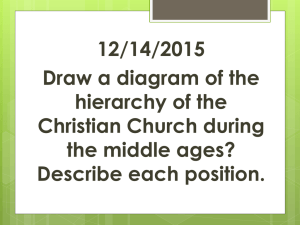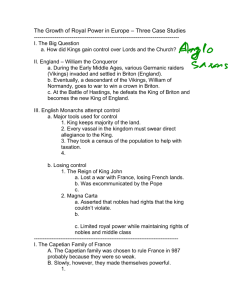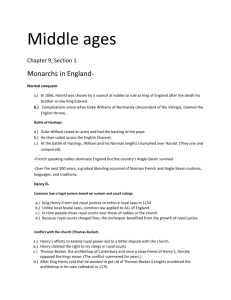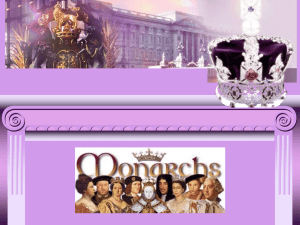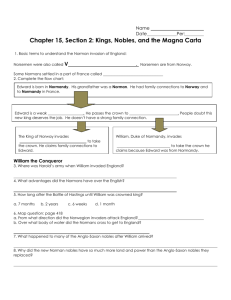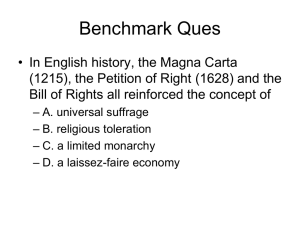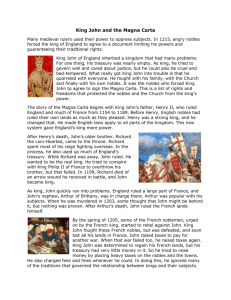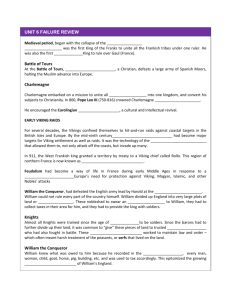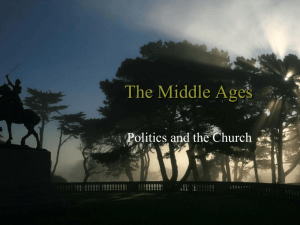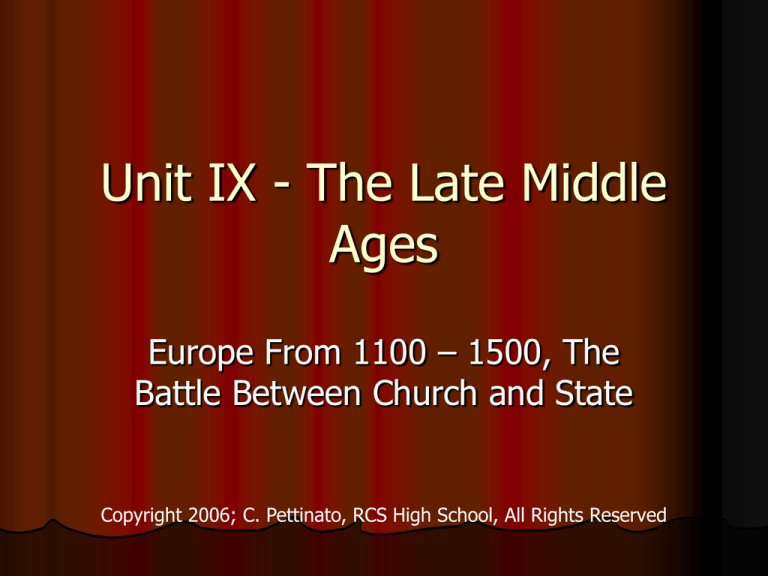
Unit IX - The Late Middle
Ages
Europe From 1100 – 1500, The
Battle Between Church and State
Copyright 2006; C. Pettinato, RCS High School, All Rights Reserved
1. Europe in the Late Middle Ages
2. Growth of Royal Power in
England
A. Who was Duke William and what did he do in
1066?
B. Why did he do it?
C. Did he give up control of his old lands?
D. How did this impact the relationship between
the nobles in England and nobles in France?
3. The Strengthening of Finances
and the Law in England
A. King Henry II 1054
1. The Exchequer
2. common law
3. grand jury
4. trial jury
5. traveling justices
6. trial of church officials
7. attack on Thomas
Beckett
B. King John
1. war loss - Philip II of
France
2.
excommunicated/interdict
by Innocent III
3. forced to sign Magna
Carta with nobles
- rights of nobles
- monarch must obey the
law
- growth - Parliament
4. King John and the Magna Carta
5. Video
6. Royal Power in France
A. Who was Hugh Capet?
B. What were the accomplishments of Philip
Augustus?
C. How was Louis IX a model king?
D. How was the French Estates General different
from the English Parliament?
6. The Conflict Between The Holy
Roman Empire and the Church
A. Pope Gregory VII wanted to make
church independent of secular rulers –
especially in appointments (lay investiture)
B. The argument between Gregory and
Henry IV (HRE)
C. The Concordat of Worms (1122)
7. Pope Innocent III
8. Henry IV – Holy Roman Emperor
8. Conflict Continued (Pope and HRE)
D. Frederick II
E. Why did German nobles grow very
independent of their Holy Roman
Emperors?
1. Frederick II ruled from Sicily
2. The Pope undermined rulers authority
10. Important Terms and People
A. William. Duke of
Normandy
B. Domesday Book
C. common law
D. jury
E. lay investiture
F. battle between
Henry II and Church
G. The Magna Carta
H. Parliament
I. Estates General
J. Philip II of France
K. Holy Roman
Empire
L. Henry IV v.
Gregory VII
M. Concordat of
Worms
N. papal supremacy

